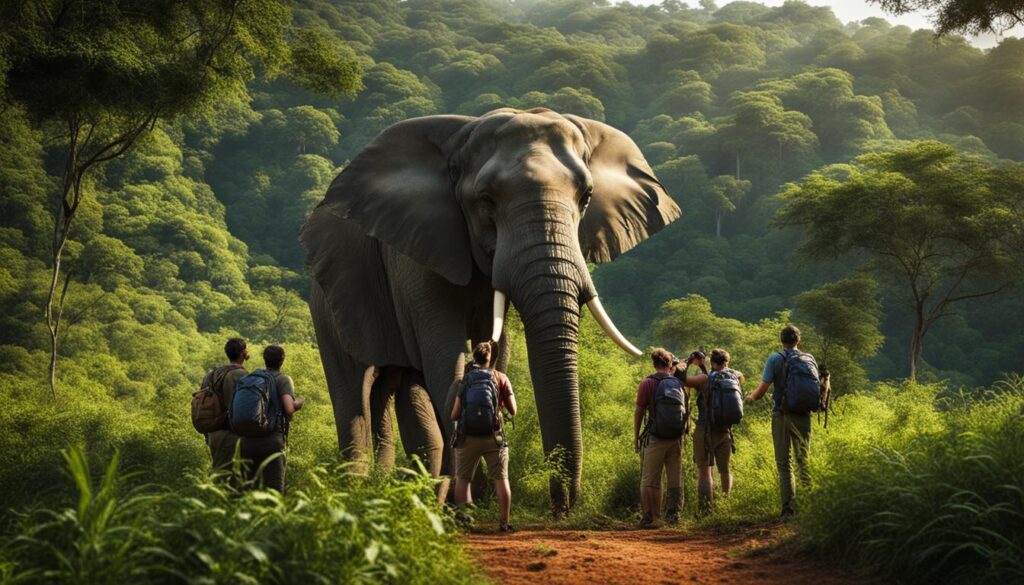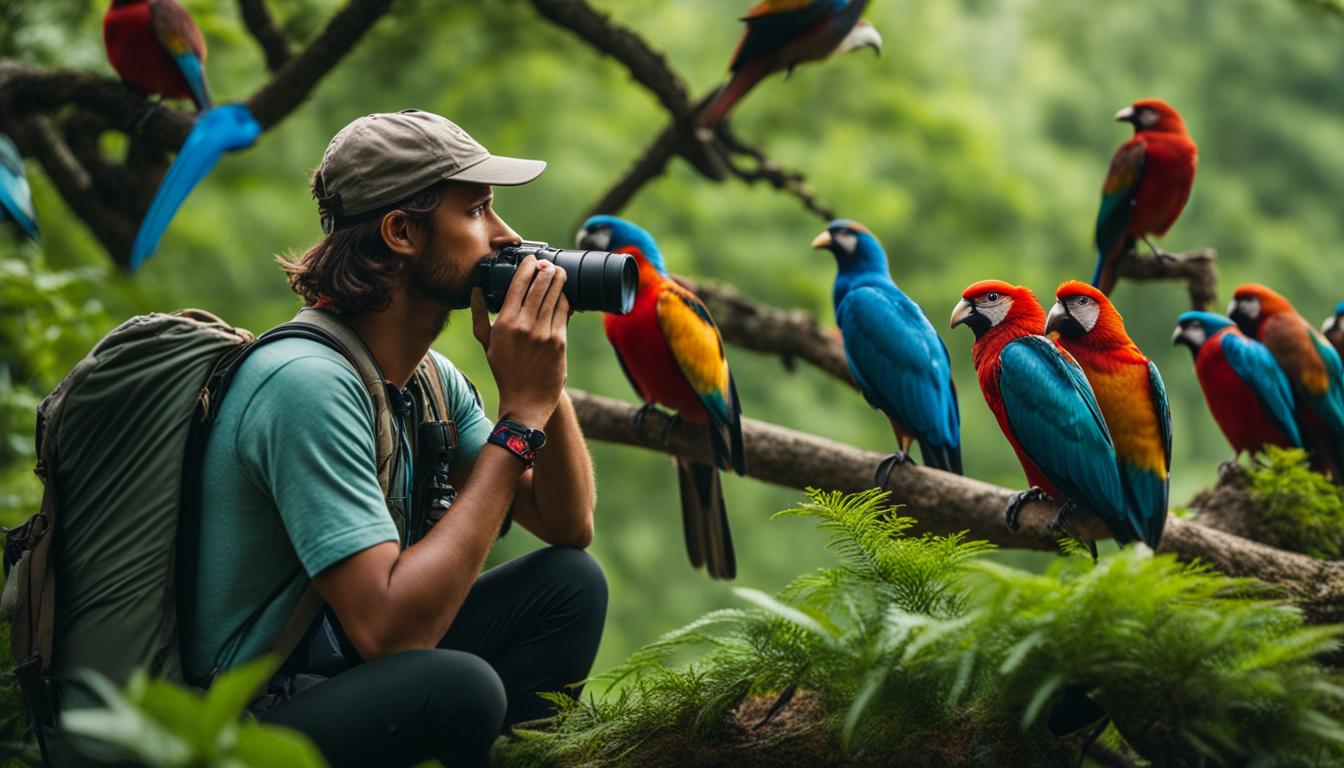Greetings fellow backpackers! If you’re heading out into the wilderness, eager to witness the wonders of wildlife up close, it’s crucial to do so responsibly. In this article, I’ll share some valuable tips for backpackers like us, who want to ensure the well-being of animals and their habitats while enjoying unforgettable encounters.
Key Takeaways:
- Responsible wildlife watching is essential for eco-friendly tourism.
- Keep a safe distance from wildlife and avoid making unnecessary noise.
- Respect breeding seasons and never feed wildlife.
- Practice Leave No Trace principles and support local communities.
Keeping a Safe Distance and Avoiding Noise

When it comes to wildlife viewing, maintaining a safe distance is of utmost importance to ensure both the well-being of the animals and our own safety. Getting too close to wildlife can disrupt their natural behavior and cause them stress. To observe animals from a distance, I recommend using binoculars or a zoom lens, allowing you to appreciate their beauty without intruding on their space.
It’s essential to avoid approaching or trying to touch wild animals. While some may appear friendly or harmless, it’s crucial to remember that they are still wild creatures and may react unpredictably if they feel threatened. By keeping a respectful distance, we can minimize any potential harm to both ourselves and the animals.
In addition to maintaining distance, minimizing noise is equally important. Animals have heightened senses and can be easily disturbed by loud sounds. When observing wildlife, speak in a calm and hushed voice to avoid causing unnecessary stress. This not only ensures a more peaceful experience for the animals but also allows us to fully immerse ourselves in their natural habitat.
“Responsible wildlife watching requires us to be mindful of our actions and their impact on the animals we encounter.”
Lastly, it’s crucial to refrain from using flash photography when photographing wildlife. The bright flashes can startle animals and disrupt their behavior. Instead, opt for natural lighting and adjust your camera settings accordingly. By practicing ethical wildlife watching techniques, we can appreciate these majestic creatures while minimizing any negative effects on their well-being.
Table: Dos and Don’ts for Ethical Wildlife Watching
| Dos | Don’ts |
|---|---|
|
|
|
|
|
|
Being Aware of Breeding Seasons and Not Feeding Wildlife
When it comes to responsible wildlife watching, being aware of breeding seasons is crucial. Understanding the different seasons throughout the year allows us to avoid disturbing or provoking aggressive behavior in wildlife. By respecting their space and keeping a safe distance during these times, we can ensure their well-being and minimize any potential risks.
Feeding wildlife may seem like a harmless act of kindness, but it is actually harmful to both animals and the environment. When we feed wildlife, it disrupts their natural foraging behavior and can make them dependent on humans for food. This can lead to unhealthy diets and increase the risk of disease transmission. It is essential to remember that animals have their own natural food sources and feeding them can disrupt the delicate balance of their ecosystems.
As responsible backpackers, it is important to practice proper food storage while camping and responsible waste disposal. By keeping our food secure and disposing of waste properly, we can minimize the chances of wildlife encounters and human-wildlife conflicts. It is our duty to protect the natural habitats of these animals and ensure their continued survival.
Table: Breeding Seasons of Some Common Wildlife Species
| Wildlife Species | Breeding Season |
|---|---|
| White-tailed Deer | Fall/Winter |
| Eastern Bluebird | Spring/Summer |
| Gray Squirrel | Spring/Fall |
By being informed about breeding seasons and respecting wildlife viewing etiquette, we can ensure a harmonious coexistence with nature. Let’s continue to appreciate the beauty of wildlife without causing harm and practice animal-friendly travel.
Leaving No Trace and Supporting Local Communities
When it comes to responsible wildlife watching, leaving no trace is essential. As a backpacker, I understand the importance of minimizing our impact on flora and fauna. To achieve this, it’s crucial to follow designated trails and avoid straying into sensitive areas.
Another way to reduce our environmental impact is by practicing proper waste management. Taking our waste with us and disposing of it responsibly ensures that we do not disturb the natural environment or endanger wildlife. By doing so, we promote sustainable travel and protect the habitats that animals rely on for survival.
In addition to minimizing our impact, supporting local communities can play a significant role in wildlife conservation efforts. These communities often live adjacent to wildlife areas and are directly involved in protecting their natural resources. By choosing accommodations with responsible tourism policies and buying souvenirs that do not contribute to habitat destruction, we can help support their efforts on the ground.
Ultimately, responsible wildlife watching is not just about observing animals from a safe distance. It is about actively contributing to wildlife conservation and sustainable travel. By leaving no trace and supporting local communities, we can ensure that future generations can enjoy the beauty of nature and its magnificent wildlife.

